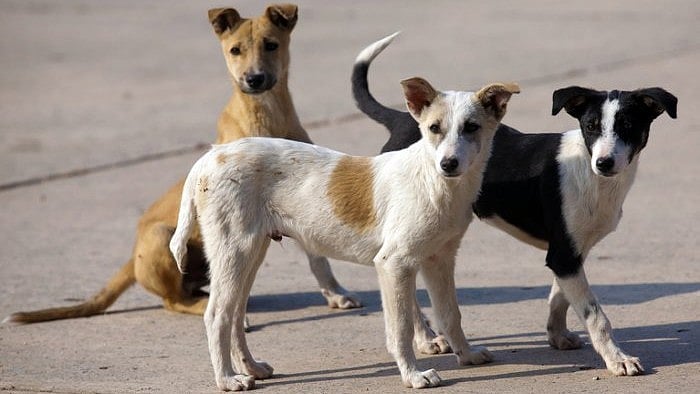
Representative image for dogs.
Credit: iStock Photo
Bengaluru: In a first-of-its-kind project aimed at rabies elimination in India, a dedicated diagnostic laboratory in Bengaluru is developing an oral vaccine for free-roaming dogs in collaboration with three other national institutes.
Tackling dog-mediated rabies in the country is a big challenge. According to WHO estimates, India suffers one-third of the global burden of the disease, which causes at least 59,000 human deaths annually. In Karnataka, as per government data, 42 human rabies deaths were reported last year, and 15 until April-end this year. The country aims to eliminate dog-mediated rabies by 2030.
In this light, the Karnataka Veterinary, Animal, and Fisheries Sciences University-Commonwealth Veterinary Association (KVAFSU-CVA) Rabies Diagnostic Laboratory at Hebbal — which is a World Organization for Animal Health's (WOAH) reference laboratory for rabies in South and Southeast Asia — will use a modified adenovirus as a vector to deliver a rabies virus clone that will stimulate the immune system of the dogs to offer protection against the virus, should they contract it.
While the team has readied the virus clone, the palatable bait is to be developed. The vaccine will either be inserted into the bait or coated over food items, allowing it to be administered orally to free-roaming dogs, which is a far easier, time-and-cost-effective process to vaccinate them than capturing and injecting each one regularly, said Dr Shrikrishna Isloor, the principal investigator and lead of the project. "We are taking up clinical trials within the next two years," he added.
These vaccines will be assessed first in mice and captive dogs for immunogenicity (ability to trigger an immune response) through evaluating neutralising antibodies and cell-mediated immune responses. Once developed, urban and rural government local bodies will take this forward, having mapped the number of free-roaming dogs in their jurisdiction. Data presented in the Lok Sabha in 2022 indicated that the number of homeless dogs in the country was around 17.1 million, with a 10% decline from 2012 to 2019.
"While vaccination of pet dogs is widely practiced, attaining satisfactory immunisation coverage of the huge free-roaming or community dog population through conventional mass vaccination (injectables) remains crucial... Although it is practiced in free-roaming dogs, there are several challenges, including the need to catch them, manpower constraints, and budgetary provisions. These drawbacks can be mostly circumvented by employing oral delivery of the vaccine," said Dr Isloor.
According to him, the duration of immunity is typically one year, and in some cases up to two years, as some recombinant oral bait vaccines have shown protective antibody levels for 12–18 months in dogs. "Factors such as dog’s health and age, dose ingested and proper uptake can affect efficacy. Hence, booster baits will extend immunity," he observed.
Challenges might also crop up, in terms of storage, aggressive dogs not approaching unfamiliar-seeming baits, or dominant dogs monopolising the feeding process. This could be addressed by accurate mapping of stray dog concentration, better cold chain management of vaccines, and close monitoring by trained animal health workers.